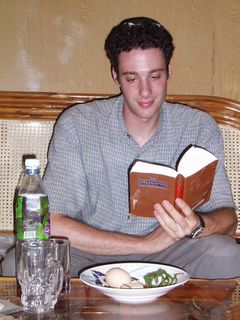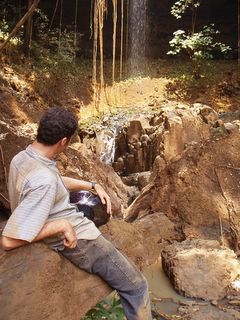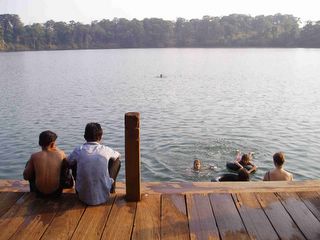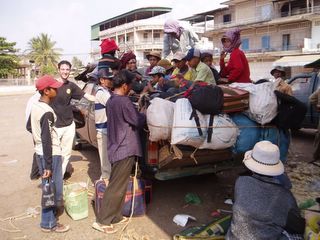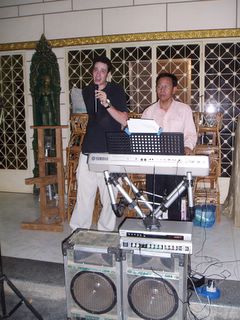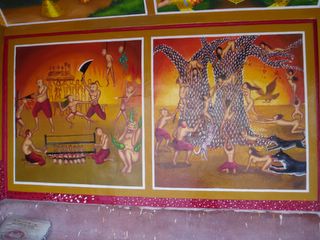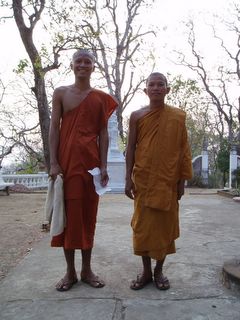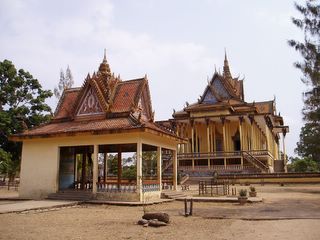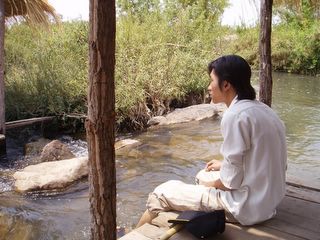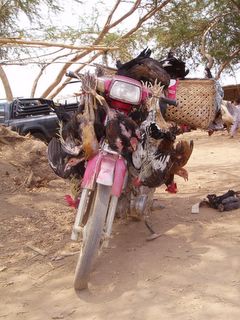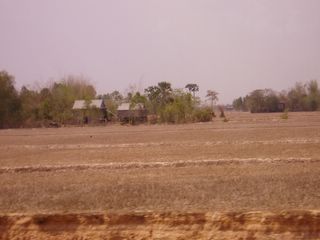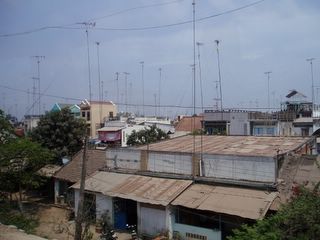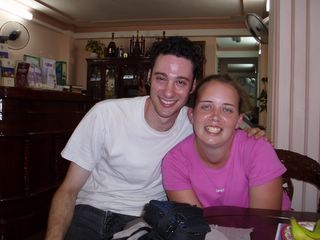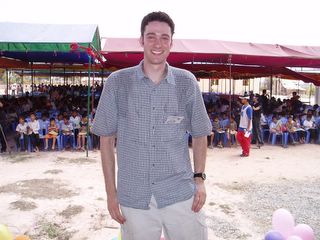A Passover Miracle
I had intended for this to be an update on the status of my work but recent events seemed too surprising for me not to share. I promise an update on my work soon.
The Jewish holiday of Passover began on Saturday night. For the uninitiated, this is one of the biggest events in the Jewish calendar. Celebrating the story of the exodus from Egypt and the receipt of God’s revelation at Sinai, it’s akin to Easter for Christians, and maybe Eid for the Muslims, or Holi for the Hindus. For eight days Jews abstain from all leavened bread and instead cook massive amounts of food using a large unleavened cracker called Matzoh. Families gather together on the first two nights for a ritual meal known as a Seder. The last supper of Jesus was one of these. It comprises a long set ritual of prayers, blessings, and consumption of symbolic foods. Wine for celebration. Eggs for renewal. Bitter herbs to represent the harshness of slavery. Salt water for tears.
For the past several weeks, friends and relatives have inquired what I planned to do to celebrate the holiday. E-mails from my mother in the weeks leading up to it were a little concerned: “Do you have any plans for Passover? Is there maybe a Seder you can join in Phnom Penh? Do the Lubavitchers at least have a community there? If not, can they maybe send you some Matzoh??”
Lubavitchers are perhaps the world’s most unique group of evangelists. They proselytize only to their own people, trying to make religious converts out of secular Jews. To that end, they’ve set up missions, often known as Chabad Houses, throughout the world. My answers were invariably the same, “The nearest Chabad is a day’s ride away across an international border in Bangkok. Asking them to ship me some Matzoh just seems ridiculous. There is no Jewish community here with which to have a seder. Only the Muslims and the ex-pats even know what a Jew is. I for one plan to have some stir fry on rice with a side of mango and maybe some eggs in salt water for my seder. Sorry Mom. I’ve got a siddur (prayer book) here that I can skim through but that’s about it.”
On Saturday night I skipped the Seder, hard-boiled the only egg I had, and, feeling full from my stir-fry, decided to save it for the next night. Sunday I went to the Cambodian National Museum, a beautiful building in which ancient images of the Buddha and the Hindu deities spanning fifteen hundred years of Khmer civilization reside in four corridors surrounding an open-air courtyard. As I wandered amongst the statues, politely refusing the jasmine flowers proffered to me by museum staff to be used as offerings to the Buddha images, the irony was not lost on me that I was spending my celebration of the victory of God over idolatry surrounded by idols.
At the center of the courtyard sat a stone Buddha meditating under a stupa in the center of a pond. Around this pond were four larger ponds filled with budding pink lotus flowers. It was quite beautiful. I relaxed nearby in the shade, alternately napping on a wicker chair and chatting with a young monk. As the museum began to empty, I stopped to take some photos. Next to me, I thought I heard someone speaking in Hebrew.
“Shalom,” I ventured to the woman walking past. “Shalom,” she replied. This was followed by a string of Hebrew I could barely discern asking where I was from, how I had learned Hebrew, and was I Jewish. After weeks of focusing on Khmer, I was unprepared for the onslaught. I stuttered, muttering in tree languages simultaneously, “Ani moak bee Canada… Crud! Ummm…. Somtoh…. Knyom lomed ha’lashon Khmer ve’lehoshev be’ivrit achshav zeh kasheh me’od. Okay… ummm… Hayom zeh Pesah?” To a Hebrew speaker, this translates roughly into “I [Khmer words] Canada. [English cursing] [More Khmer] learning the tongue is Khmer and to thenk in Hebrew now, this very hard. Okay… [awkward pause] Today is Passover?”
She was nonplussed and responded in Hebrew that yes it was Passover, she and her tour group were on holiday though and didn’t much mind missing the rituals and then switched to English and said, “Okay. Bye-bye.” I was dismissed.
I spent the next ten minutes amongst the statuary abusing myself in Hebrew for my inability to communicate. This helped me remember how to speak properly. I was sure that, limited as my abilities were, given another opportunity, I’d be able to use them. On the way out, as I put my camera in my backpack, the man in front of me mumbled something garbled in Hebrew that sounded like “…. speak Hebrew.”
“I can speak a little bit,” I responded, “You are all … Israeli?” From there, with slightly clearer Hebrew, I attracted a crowd. “You’re the first Jews I’ve seen in two months,” I told them. Between English and Hebrew, I explained about my work, life in Cambodia, and my mother’s questions about my Seder plans.
The whole tour group took an interest. They had already had their Seder but one of them had leftover Matzoh, wine, and bitter herbs to offer me. He gave me the name of their hotel, his name, Ranata, and a room number. “Stop by at eight o’clock,” he told me, continuing with a little snarkiness, “You can tell your Mother that it was Israelis not Lubavitchers who were able to help you.” When I arrived, I was immediately recognized and greeted by the members of the tour. Ranata had no wine or bitter herbs to give after all, but he did supply me with enough Matzoh to last the rest of the week, some rabbinically certified cookies, and even a large Kosher for Passover Toblerone bar. I was amazed and very grateful, thanking him and everyone else in sight profusely before merrily biking home.
Searching for juice at the market as it was closing the day before, all I had been able to find was grape drink. I had never seen grape drink here before and wanted a different flavour. None was available. So, I bought it. Arriving home that night, I soon found myself in conversation with my next-door neighbour. As we chatted one of the young men from the neighbourhood arrived. We had never met but his English was good and the conversation went on for some time. An essential ingredient of the Passover Seder is four cups of wine or at least grape juice. I offered some grape drink to both my neighbour and our guest before quietly starting a ritual of my own as we talked. The only English on the bottle assured me that it contained “25% real juice.” This was good enough for me.
Afterwards, lacking many of the tools for a proper Seder, not least of which is a Hagadah, a prayer book containing the proper order and wording of the various prayers and rituals, I nevertheless threw on my skullcap, put my egg, a hot pepper to substitute for the bitter herbs, some soup spices in place of green leafy vegetables, and my matzoh in a bowl. It wasn’t quite a ritual seder plate but I figured it would do in a pinch. I mixed up some salt water for dipping in a glass and recited what blessings I could in what was almost certainly the wrong order. Afterwards, I followed what prayers I could from my general all-purpose siddur (prayer book).
So this was my Passover miracle. Was it Kosher? Almost certainly not. Still, between all of the unlikely events leading up to it, purchasing the grape drink, preserving my only remaining egg an extra day, and obtaining the matzoh from the Israelis, I’m loathe to call it all coincidence.

